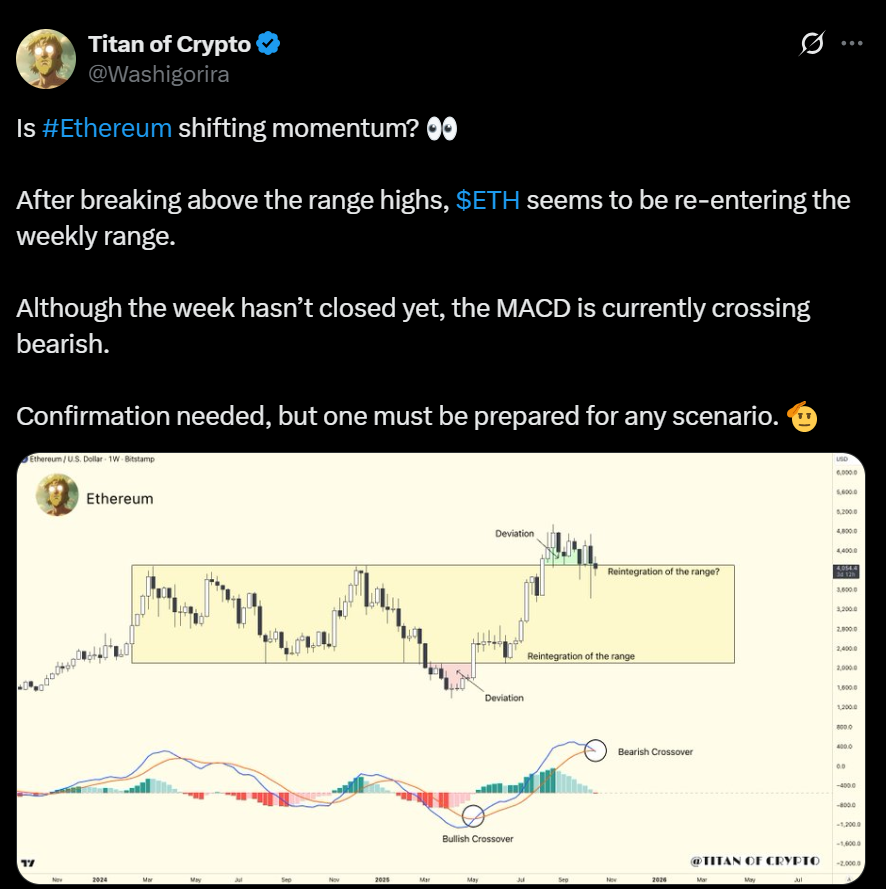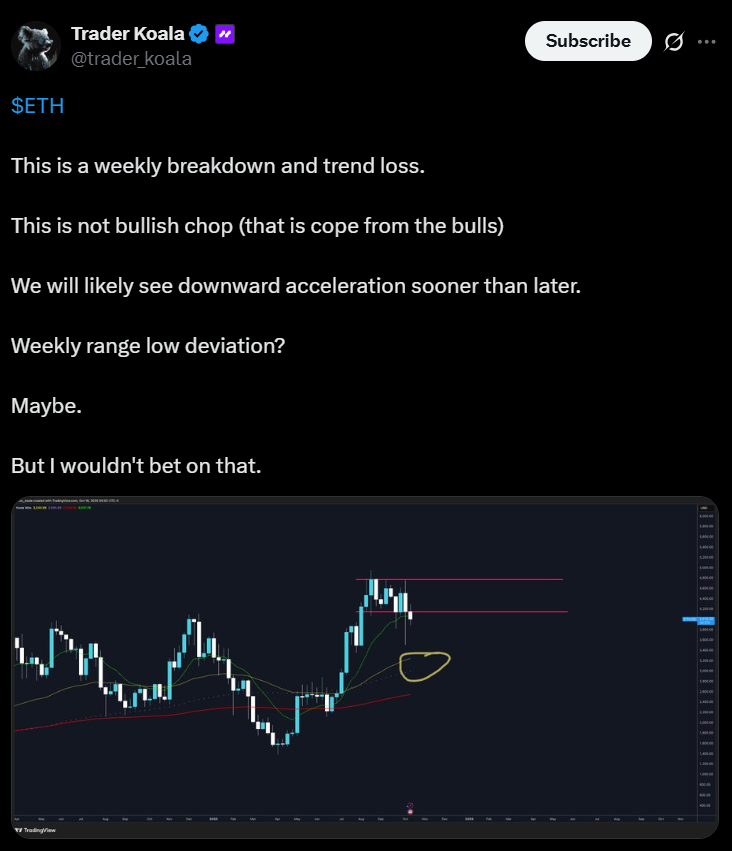- Ethereum’s weekly MACD has confirmed a bearish cross, repeating a signal that preceded prior 60% crashes.
- Analysts warn ETH must hold above $4,000 to avoid another steep drawdown.
- Momentum indicators show fading strength as traders brace for potential downside.
Ethereum’s MACD indicator has flashed a bearish cross on the weekly chart — the same technical signal that preceded its 46% and 60% drops in 2024 and early 2025. Analysts warn that unless ETH holds above $4,000, a deeper correction could follow. The signal shows the MACD line crossing below the signal line, a shift that historically marks the start of strong downward momentum.
Historical Patterns Suggest a Potential 60% Downside
The last two bearish MACD crosses saw ETH tumble sharply within weeks. In mid-2024, the move triggered a 46% crash, followed by a 60% drawdown earlier this year. Market watchers like CRYPTO Damus noted that the indicator flipping red after 22 consecutive green weeks is “not a good sign.” Fellow analyst Titan of Crypto echoed caution, telling traders to “prepare for any scenario” as the bearish cross confirms.

$4,000 Remains the Critical Line for Bulls
Ethereum is now retesting the $4,000 support zone, a crucial level that has acted as a launchpad since August. If bulls can hold above it, ETH could stabilize and attempt another push toward $5,000. However, losing this level could signal a larger correction, with the next key area of support sitting near $3,745 — the lower boundary of its descending channel. Analysts note that a break below this region could accelerate selling pressure, potentially dragging ETH much lower.
Technical Outlook Points to Short-Term Weakness
Momentum indicators like RSI and MACD show waning bullish strength. Trader Koala described ETH as being in a “weekly breakdown and trend loss” after falling below $4,200.

While some traders still expect a rebound if $3,900 holds, most agree that the current setup favors bears in the near term. Historically, when ETH lost this level — as in December 2021 — it led to a prolonged selloff that wiped out over 75% of its value.














